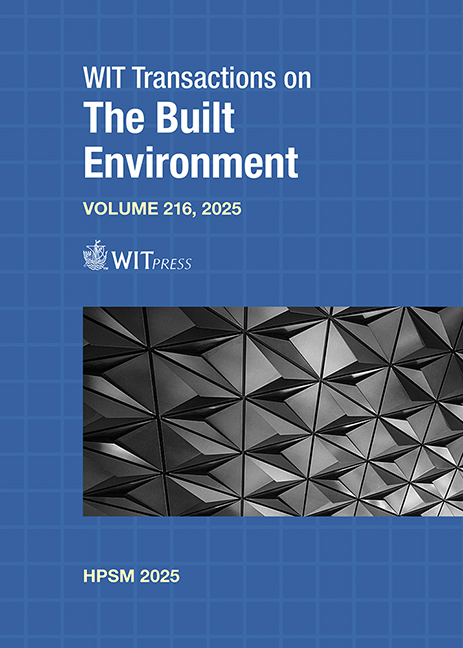RESIN IMPREGNATION FOR CONTINUOUS CARBON FIBRES USING ROLLERS
Price
Free (open access)
Transaction
Volume
216
Pages
11
Page Range
3 - 13
Published
2025
Paper DOI
10.2495/HPSM250011
Copyright
Author(s)
YUJI KONDO, KOYA HOSOKAWA, TATSUYA TANAKA, MASAHIRO SASADA
Abstract
In the pursuit of high-quality and high-strength continuous fibre-reinforced thermoplastic (CFRTP) filaments, enhancing fibre dispersibility is critical. This study focuses on enhancing the fibre spreading mechanism via the roller method, a process that was previously inaccessible to observation due to the use of resin-filled equipment. To overcome this limitation, an experimental apparatus was developed that enabled in situ visualization of fibres’ behaviour. In the conventional roller spreading method, the cylindrical rollers had limitations in fibre spreading. An alternative approach employing inclined rollers was then tested; however, excessive inclination led to a pronounced central bias of the fibres, further hindering uniform dispersion. To address this challenge, we devised a roller with a curved shape designed to mitigate fibre bias while increasing the spreading width. Continuous fibre-reinforced filaments were produced using this innovative geometry, and the effects on fibre dispersibility and void area were evaluated at pull speeds of 1 m/min and 2 m/min. The findings of the study demonstrated that the curved roller reduced the void area and a modest enhancement in fibre dispersibility when compared to traditional cylindrical rollers. These observations suggest that the curved roller design is effective in producing superior quality CFRTP filaments and indicate a promising potential for further improvements in composite material performance.
Keywords
CFRTP, fibre spreading, roller spreading method





